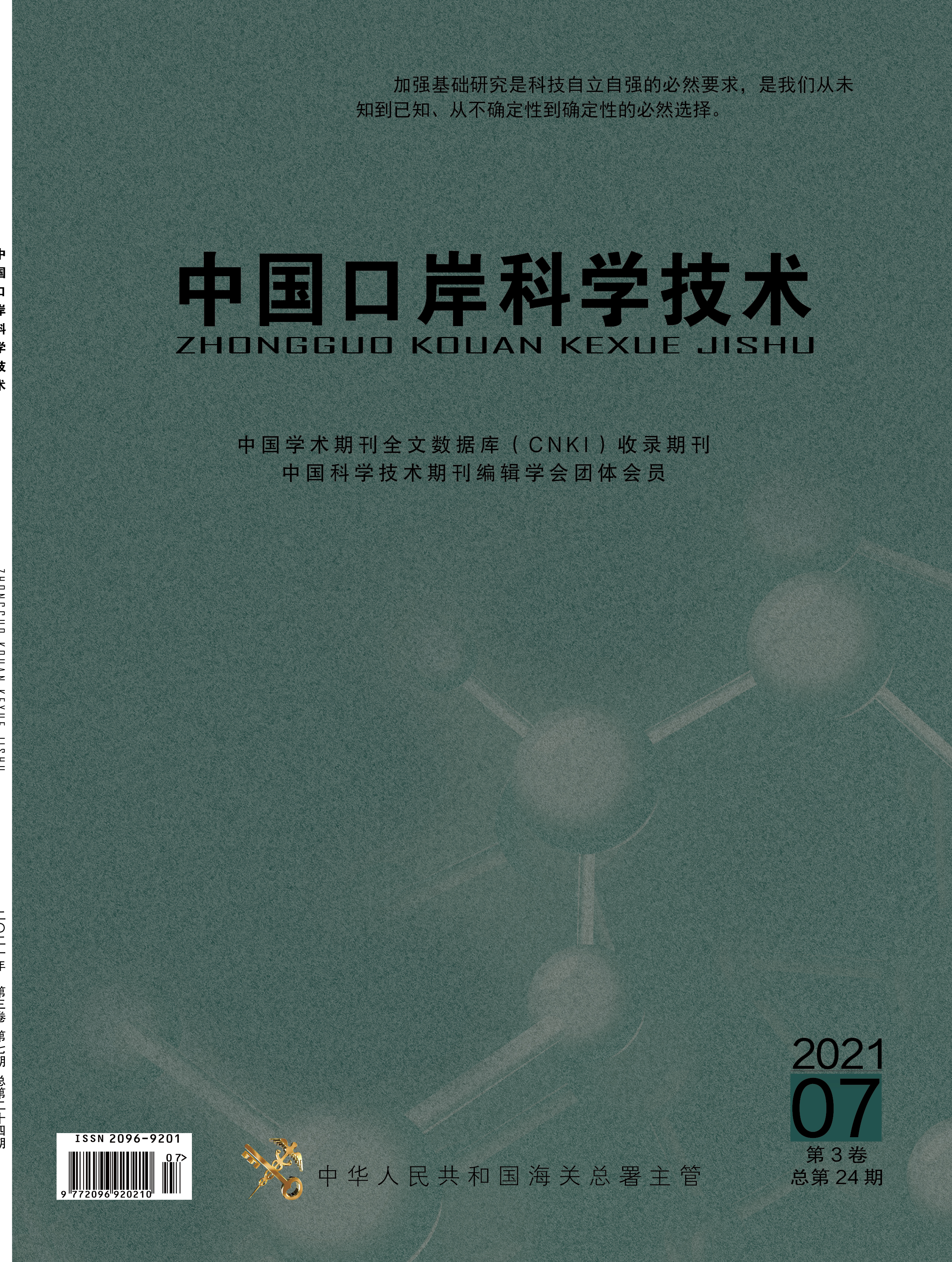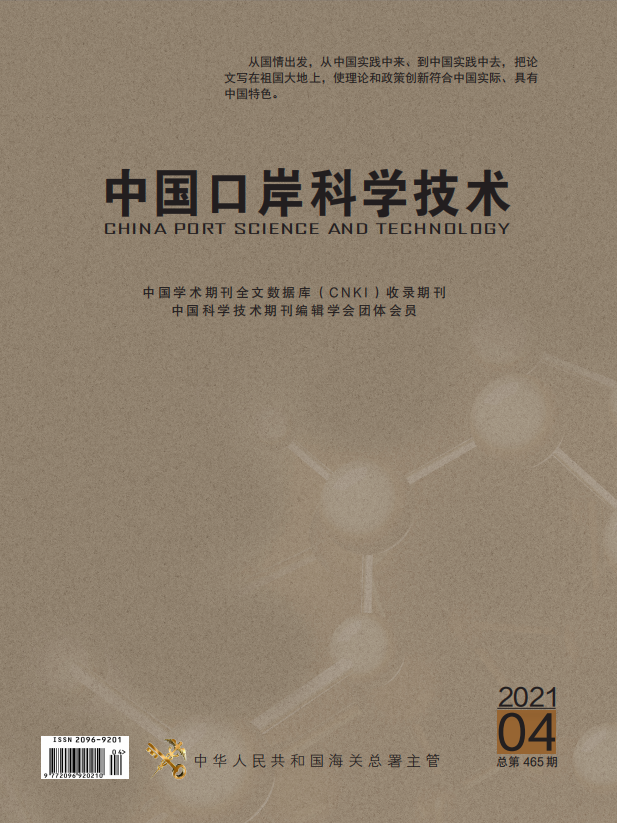CopyRight 2009-2020 © All Rights Reserved.版权所有: 中国海关未经授权禁止复制或建立镜像
六种非O157产志贺毒素大肠埃希氏菌的研究进展
作者:牛 娜1,2 赵 芳1,2 刘 莹1,2 马淑棉1,2 涂晓波1,2 黄欣迪1,2 吕敬章1,2*
牛 娜1,2 赵 芳1,2 刘 莹1,2 马淑棉1,2 涂晓波1,2 黄欣迪1,2 吕敬章1,2*
摘 要 本文对六种非O157产志贺毒素大肠埃希氏菌O26、O45、O103、O111、O121、O145流行病学情况、最新的检测方法及其研究进展进行了介绍,并对美国农业部公布的官方检测方法的检测步骤进行了简要介绍和评述。
关键词 非O157大肠埃希氏菌;检测;Top Six STEC
Review on Top Six non-O157 Shiga-toxin Producing Escherichia Coli
NIU Na1,2 ZHAO Fang1,2 LIU YING1,2 MA Shu-Mian1,2
TU Xiao-Bo1,2 HUANG Xin-Di1,2 LV Jing-Zhang1,2*
Abstract In this review, we summarized the epidemiology, the lately developed detecting methods and the research progress on the Top Six non-O157 Shiga-toxin producing Escherichia coli. Furthermore, we had a brief introduction and comments on the detection methods and related protocols officially announced by the United States Department of Agriculture.
Keywords non-O157 Escherichia coli; detection ; top six STEC
1977 年,Konowalchuk[1]报道了一组大肠埃希氏菌可产生一种对Vero 细胞具有广泛且不可逆损伤作用的毒素,随后发现这类产Vero 细胞毒素的大肠埃希氏菌可致人发生出血性肠炎( hemorrhagic colitis, HC) 、溶血性尿毒综合征( hemolytic uremic syndrome, HUS)等病症[2-3]。由于Vero细胞毒素与志贺氏菌的毒素在生物学特性、物理特性和抗原性等方面的高度相似性[4],这类产Vero 细胞毒素的大肠埃希氏菌被统称为产志贺毒素大肠埃希氏菌( shiga toxin- producing Escherichia coli, STEC)。由于STEC可引起人类严重的疾病症状甚至致人死亡[5] ,而且感染剂量非常低(1-100cfu) [6] ,抗生素治疗反而还有加剧病情的危险, 因此STEC已成为世界范围内威胁人类健康的重要食源性致病菌。我国也将STEC列为对人类公共卫生安全有重大影响的12种病原微生物之一[7] 。
1 流行病学情况
早在2010年,世界卫生组织(WHO)食源性疾病负担流行病学参考小组(FERG)曾作出评估:每年食源性STEC感染造成了100多万例疾病,128人死亡和近13000残疾[8] 。欧洲疾病预防控制中心年度监测报告的数据显示,2018年欧洲STEC感染率比上一年猛增40%,这使得STEC在欧洲成为继弯曲菌和沙门氏菌之后的第三大常见人畜共患病。
大量证据表明牛、羊、鹿等反刍动物是STEC的重要宿主[9] ,其中牛是最主要的宿主。猪、狗、猫、兔及禽类等也是STEC的重要携带者[10-11] ,这些动物生肉及其制品在加工过程容易受到其粪便的污染,STEC则可通过食物链致人感染,牛肉、乳制品和蔬菜排在受污染食物的前三位[12] 。STEC产生的志贺毒素( shiga toxin, STX)经肠上皮细胞吸收后转运到血液中使人发病;另外,STEC在肠上皮细胞上的粘附能力和在肠道定殖的能力也是影响其致病性的关键因素[13] 。
目前发现的STEC血清型大约有400种以上[14] ,其中对人具有致病性的血清型在150种以上[15] 。也有报道指出对人具有致病性的血清型数量可能被低估,几乎所有的STEC血清型都对人具有致病性[11] 。O157是STEC最常见、也是最主要的致病血清型,针对STEC O157致病分子机制的研究最为深入。除O157之外的STEC称为非O157血清型STEC(non-O157 STEC)。
自1982年美国首次报道O157∶H7以来,我国以及日本、英国、加拿大、瑞典等国都曾报道过O157造成的感染[16-17]。近年来,非O157菌株的流行情况也日益严峻,在部分国家地区甚至超过了O157的流行情况,我国也从腹泻患者体内、多种动物性食品中分离到了非O157菌株[17] 。美国疾病预防和控制中心2003~2016年疾病监测数据表明,在STEC爆发事件中,由O157引起发病比例呈逐年下降趋势(见表1),从2013年开始,非O157血清型STEC的病例,超过了O157;而实验室血清分型发现,在非O157血清型STEC的病例中,由O26、O45、O103、O111、O121、O145(以下称这六种非O157血清型STEC 为Top Six STEC)引发的病例数逐年上升,已占非O157血清型STEC病例的90%(见表2) [18] 。因此,美国农业部宣布从2012年6月4日开始实施一项新的计划,将Top Six STEC与O157∶H7作为生牛肉产品及产品的非法掺入物,进行强制检验[19-20]。食品法典委员会也在考虑制定STEC的限量标准[12] 。
表1 2003~2016年美国STEC疾病报告数据[18]
Table 1 2003~2016 U.S. STEC Disease Report data[18]
年份 | O157病例(个) | 百分比(%) | non-O157病例(个) | 百分比(%) |
2003 | 2674 | 91.2 | 258 | 8.8 |
2004 | 2544 | 89.2 | 308 | 10.8 |
2005 | 2621 | 84.0 | 501 | 16.0 |
2006 | 3008 | 87.8 | 423 | 12.2 |
2007 | 2360 | 80.0 | 584 | 20.0 |
2008 | 2669 | 75.1 | 883 | 24.9 |
2009 | 2215 | 71.3 | 893 | 28.7 |
2010 | 2046 | 59.3 | 1404 | 40.7 |
2011 | 2366 | 52.9 | 2110 | 47.1 |
2012 | 2460 | 52.0 | 2267 | 48.0 |
2013 | 2382 | 49.4 | 2442 | 50.6 |
2014 | 1919 | 43.3 | 2512 | 56.7 |
2015 | 2121 | 44.0 | 2701 | 56.0 |
2016 | 2323 | 42.8 | 3104 | 57.2 |
表2 2003~2016年美国非O157 STEC疾病报告数据[18]
Table 2 2003~2016 U.S. non-O157 STEC Disease Report data[18]
Table 2 2003~2016 U.S. non-O157 Disease Report Data年份 | (株) | Top Six STEC(株) | Top Six STEC百分比(%) |
2003 | 239 | 166 | 69.4 |
2004 | 248 | 188 | 75.8 |
2005 | 348 | 250 | 71.8 |
2006 | 554 | 372 | 67.2 |
2007 | 964 | 627 | 65.0 |
2008 | 883 | 611 | 69.2 |
2009 | 893 | 539 | 60.4 |
2010 | 1404 | 1246 | 88.7 |
2011 | 2110 | 1866 | 88.4 |
2012 | 2267 | 1980 | 87.3 |
2013 | 2442 | 2188 | 89.6 |
2014 | 2512 | 2242 | 89.3 |
2015 | 2701 | 2409 | 89.2 |
2016 | 3104 | 2760 | 88.9 |
2 Top Six STEC检测方法概述
由于全球范围内的STEC流行及其带来的不良影响以及针对STEC的特异性治疗手段与疫苗的缺乏,对STEC的检测和鉴定变得尤为重要。目前的检测方法主要有传统检测法、免疫学检测法、分子生物学检测法。我国针对或涵盖部分STEC的标准检测方法(包括国家标准及行业标准)主要是通过传统的增菌、分离、纯化后,进行生化实验以及毒力基因PCR检测或血清学实验进行最终确认,或者是选择通过接种Vero细胞或HeLa细胞,观察细胞病变来予以确认。部分标准在增菌与分离纯化间增加了酶联免疫吸附测定(ELISA)或免疫磁珠富集分离步骤,对样品初筛或在短时间内增加特异性菌株的浓度。目前尚未建立针对上述致病性TOP six STEC的专门检测标准。
由于Top Six STEC除了能产STX外,与普通大肠埃希氏菌在生化特性上没有显著性差异,因此Top Six STEC检测程序非常复杂并且难度很大,目前研究人员还在为寻找优秀的检测方案而努力。
2.1 Top Six STEC的增菌
样品中往往同时存在种类繁多、与Top Six STEC生物学特性类似的大量背景菌。这是Top Six STEC的选择性增菌面临的最大挑战。许多研究者在增菌培养基中添加胆盐、亚碲酸钾,以及添加新生霉素、万古霉素、头孢克肟等抗生素以抑制背景菌的生长[21-22],但部分Top Six STEC菌株因对新生霉素等添加剂敏感而生长受到抑制[23] 。有报道用不加添加剂的普通预增菌肉汤(Universal preenrichment broth)、培养温度为42℃的增菌方法检测牛肉中的STEC O26比添加新生霉素的增菌液效果更好[24] 。近来研究发现,由于STEC比较耐酸[25] ,采用酸性增菌程序也能抑制背景菌的生长[26] ,并且比常用的增菌方法更能有效促进Top Six STEC的复苏[27] 。
2.2 Top Six STEC的分离
由于Top Six STEC与普通大肠埃希氏菌的生化特性非常相似,导致Top Six STEC的分离鉴定很困难,目前还未发现完全可靠的分离培养基。有研究发现某些STEC O26菌株由于不能发酵鼠李糖,可用鼠李糖麦克凯琼脂来分离鉴别[28] 。有研究者采用由一个系列分离和鉴别培养基组成的检测程序,来分离Top Six STEC中的O26、O103、O111、O145,取得了一些效果[29] ,但这个检测程序过于繁琐和复杂。近来有报道,利用Top Six STEC的β-半乳糖苷酶和β-葡萄糖醛酸酶活力的高低,采用Rainbow Agar来分离Top Six STEC[30] 。但Top Six STEC在Rainbow Agar上颜色多变,而且会受到背景菌的影响。有研究通过对Rainbow Agar配方进行改良并结合对增菌液的酸处理,其分离效果可得到改善[31] 。CHROMagar STEC是新近推出的一种显色培养基,可用于一些流行的STEC 比如O26、 O104、O145、 O157的分离。最新的报道显示, ChromAgar STEC对植物源性食品中O26、O103、 O111、 O118、 O121、 O145 、 O157 和O104具有较好分离效果[32] ,但该培养基尚需得到广泛的认同。为了提高Top Six STEC的分离效果,研究趋向用STEC O26、O103、 O111、O145抗体包被的免疫磁珠进行预富集[33] 。
2.3 Top Six STEC的确认
Top Six STEC的确认包括三个方面[31] :生化鉴定、毒性基因检测、抗原鉴定。Top Six STEC 都是大肠埃希氏菌,其生化鉴定相对简单,可用VITEK®2等鉴定仪或其它生化鉴定技术。志贺毒素和紧密黏附素是Top Six STEC的重要致病因子,检测编码这两个致病因子的基因 stx和eae是确认Top Six STEC的致病性的手段。Top Six STEC的抗原鉴定可用免疫学的方法[34] ,也可通过分子生物学的方法检测编码其抗原的基因[31] 。
3 美国农业部检测方法介绍
美国农业部已公布了肉制品中STEC的检测方法[28] ,该方法由美国农业部农业研究局东区研究中心研发,是目前比较推崇的检测STEC的官方方法。该法采用多重实时荧光PCR对STEC进行筛选后,再进行分离确证,方法的主要步骤如下。
3.1 增菌
在325 g份样品中加入975 ml 改良的胰蛋白胨大豆肉汤mTSB,于42℃±1℃ 培养 15 h~22 h。这个增菌程序可减少受损伤菌株的漏检,同时能维持抑制背景微生物的能力。另外,杜邦公司的产品BAX system MP据称也有类似功能,并且更能促进受损伤菌株的复苏。
3.2 筛选
按PCR检测试剂盒方法,对增菌液进行检测毒素基因stx(不区分stx1和stx2)和紧密黏附素基因eae,毒素基因stx和紧密黏附素基因eae中任何一个检测结果为阴性者,即停止试验报告阴性结果。两者均为阳性者,再用多重实时荧光PCR 方法检测编码Top Six STEC的O抗原基因。
肉制品中不仅会同时带有多个血清型的STEC菌株,还有大量其他肠杆菌科细菌,例如柠檬酸杆菌、阴沟肠杆菌、弯曲菌、志贺氏菌,以及某些不动杆菌和嗜水气单胞菌也可能带有stx基因, 一些柠檬酸杆菌还可能带eae基因,故stx、eae、wzx三个基因可能分布在同一增菌液的不同菌株,来自不同细菌的目标基因组合起来可造成STEC筛选的假阳性结果。因此,美国农业部检测方法采用了二次PCR检测的筛选策略,即当stx和eae的PCR检测结果均为阳性时,再进行Top Six STEC的O抗原基因PCR检测,如此可兼顾检测方法的效率和准确性,快速、大幅度降低疑似阳性样品数量。同时,Top Six STEC的O抗原基因的PCR检测缩小了疑似目标菌范围,即可能为STEC中的哪一个或几个,为下一步菌株分离确认指明方向。
但是这一筛选程序步骤繁杂,需要多次离心和重悬浮,不易同时处理数量较多的样品。目前市场上相继出现了几种商业化的快速解决方案,较成熟有BAX system STEC Suite(Dupont)、GDS STEC(Biocontrol)。BAX system STEC Suite的操作流程更简单, 而GDS STEC采用了先富集而后进行PCR检测的流程,有效减少了其他STEC的干扰,但其灵敏度受背景微生物的影响较大。
3.3 分离
当增菌液中stx、eae、Top Six STEC的O抗原基因PCR检测均为阳性结果时,才进行下一步试验。首先用Top Six STEC的O抗原基因阳性者对应的O抗原的抗体包被的磁珠,对增菌液进行免疫富集,然后在450 μl富集液中加入25μl 1N 的盐酸,在18℃ ~30℃ 搅拌混匀1h后,加入475 μl 的E-buffer缓冲液,取0.1 μl的磁珠悬浮液涂布在改良的Rainbow Agar上,35℃± 2℃培养 20 h~24 h 。另取磁珠悬浮液用E-buffer缓冲液进行10倍稀释后进行涂布和培养。
3.4 确认
挑选改良的Rainbow Agar上疑似菌落(受背景菌的影响,目标菌在改良的Rainbow Agar上形态多变)用乳胶凝集试剂进行血清试验,乳胶凝集试验阳性的菌株接种于绵羊血琼脂(SBA)上,35℃ ± 2℃培养 18 h~24 h后,再次进行乳胶凝集试验,并用相应的PCR检测方法对其抗原进行确认。另外,还需对SBA上乳胶凝集试验阳性的菌株进行生化鉴定(比如采用VITEK® 2)。
4 结语
Top Six STEC是除大肠埃希氏菌O157外,严重威胁人类健康的六种非O157血清型的重要致病菌。但由于其与普通大肠埃希氏菌在生化特性上没有差异,因此Top Six STEC检测程序非常复杂。美国农业部公布的肉制品中STEC的检测方法,是目前经典的检测STEC的官方方法。但该方法步骤繁杂,质控程序多,特别是分离琼脂的效果不太令人满意,因此限制了该方法的广泛应用,并且该方法也在不断更新改进中。
【该文经CNKI学术不端文献检测系统检测,总文字复制比为2.2%】
参考文献
[1] Konowalchuk J, Speirs JI, Stavric S. Vero response to a cytotoxin of Escherichia coli [J]. Infect Immun, 1977, 18: 775-779.
[2] Riley LW, et al. Hemorrhagic colitis associated with a rare Escherichia coli serotype [J]. N Engl J Med, 1983, 32: 2335-2337.
[3] Karmali MA, et al. Sporadic cases of haemolytic uremic syndrome associated with faecal cytotoxin and cytotoxin- producing Escherichia coli in stools [J]. 1983,Lancet i: 619-620.
[4] O'brienad and Laveck GD.Purification and characterization of a Shigella dysenteriae 1-like toxin produced by Escherichia coli [J]. Infect Immun. 1983,40: 675-683.
[5] Mughini-Gras, van Pelt W, van der Voort M, et al. Attribution of human infections with Shiga toxin-producing Escherichia coli (STEC) to livestock sources and identification of source-specific risk factors, The Netherlands (2010-2014) [J]. Zoonoses and public health, 2018, 65 (1): 8-22.
[6] Ferens Witold A, Hovde Carolyn J. Escherichia coli O157:H7: animal reservoir and sources of human infection[J]. Foodborne Pathog Dis, 2011, 8(4): 465-487.
[7] 邢丽萍, 杨月清, 李萍, 等.呼和浩特市食品中大肠埃希氏菌O157:H7污染状况调查[J]. 疾病监测与控制杂志, 2013, 7(1)14-15.
[8] Martyn D. Kirk, Sara M. Pires, Robert E. Blac, et al. World Health Organization estimates of the global and regional disease burden of 22 foodborne bacterial, protozoal, and viral diseases, 2010: A data synthesis[J]. PLOS Medicine,2015, 12(12): e1001921.
[9] Gyles CL, Shiga toxin-producing Escherichia coli: an overview[J]. Journal of Animal Science, 2007, 85, E45-E62.
[10] Beutin L, et al.. Prevalence and some properties of verotoxin (Shiga-like toxin)-producing Escherichia coli in seven different species of healthy domestic animals[J]. J Clin Microbiol. 1993, 31: 2483-2488
[11] EFSA BIOHAZ Panel Kostas Koutsoumanis Ana Allende , et al. Pathogenicity assessment of Shiga toxin-producing Escherichia coli (STEC) and the public health risk posed by contamination of food with STEC [J]. EFSA J. 2020,18(1): 1-105.
[12] Majowicz S , Pires SM , Devleesschauwer B . Attributing illness caused by Shiga toxin-producing Escherichia coli (STEC) to specific foods[M]. 2019.
[13] Paton JC, Paton AW. Pathogenesis and diagnosis of Shiga toxin-producing Escherichia coli infections [J]. Clin Microbiol Rev. 1998, 11: 450-479.
[14] Mora Azucena, Herrrera Alexandra, López Cecilia, et al. Characteristics of the Shiga-toxin-producing enteroaggregative Escherichia coli O104:H4 German outbreak strain and of STEC strains isolated in Spain [J]. International microbiology: the official journal of the Spanish Societyfor Microbiology, 2011, 14 (3): 121-141.
[15] FSIS/USDA. Risk profile for pathogenic non-O157 shiga toxin-producing Escherichia coli (non-O157 STEC)[EB/OL]. [2020-5-20]. https://www.fsis.usda.gov/shared/PDF/Non_O157_STEC_Risk_Profile_May2012.pdf
[16] 冉陆.肠出血性大肠杆菌(EHEC)流行趋势(综述) .中国食品卫生杂志[J], 1999, (03)3-5.
[17] 纪凯丽.7种血清型STEC多重荧光定量PCR检测方法的建立及其应用[D].
[18] Centers for Disease Control and Prevention . National Shiga Toxin-Producing Escherichia coli (STEC) Surveillance[EB/OL]. [2020-5-3]. https://www.cdc.gov/nationalsurveillance/ecoli-surveillance.html
[19] FSIS/USDA. Fsis verification testing for non-O157 shiga toxin-producing Escherichia coli (non-O157 STEC) in imported product under the MT51 sampling program[EB/OL]. [2012-8-18]. http://www.fsis.usda.gov/OPPDE/rdad/FSISNotices/30-12.pdf
[20] FSIS/USDA. Fsis verification testing for non-O157 shiga toxin-producing Escherichia coli (non-O157 STEC) under MT60, MT52, and MT53 sampling programs[EB/OL]. [2012-8-18] .http://www.fsis.usda.gov/OPPDE/rdad/FSISNotices/40-12.pdf
[21] Vimont A, Vernozy-rozand C, and Delignette-muller ML. Isolation of E. coli O157:H7 and non-O157 STEC in different matrices: review of the most commonly used enrichment protocols [J]. Lett Appl Microbiol. 2006 , 42: 102-108.
[22] Hussein HS, Bollinger LM, and Hall MR. Growth and enrichment medium for detection and isolation of shiga toxin-producing Escherichia coli in cattle feces [J]. J Food Prot. 2008 , 71: 927-933.
[23] Vimont A, Delignette-muller ML, and Vernozy-rozand C. Supplementation of enrichment broths by novobiocin for detecting Shiga toxin-producing Escherichia coli from food: a controversial use [J]. Lett Appl Microbiol. 2007,44: 326-331.
[24] Kanki M, Seto K, Sakata J, et al. Simultaneous enrichment of shiga toxin-producing Escherichia coli O157 and O26 and Salmonella in food samples using universal preenrichment broth [J]. J Food Prot. 2009,72: 2065-2070.
[25] Chen L, Zhao X, Wu JE, et al.Metabolic characterization of eight Escherichia coli strains and acidic responses of selected strains revealed by NMR spectroscopy. [J]. Food Micro. 2020, in press.
[26] Hu J, Green DA, Swoveland J, et al. Preliminary evaluation of a procedure for improved detection of shiga toxin-producing Escherichia coli in fecal specimens [J]. Diagn Microbiol Infect Dis. 2009,65: 21-26.
[27] Grant MA, Mogler MA, and Harris DL. Comparison of enrichment procedures for shiga toxin-producing Escherichia coli in wastes from commercial swine farms.J Food Prot[J]. 2009,72: 1982-1986.
[28] Evans J, Knight HI, Smith AW, et al. Cefixime-tellurite rhamnose MacConkey agar for isolation of verocytotoxin producing Escherichia coli serogroup O26 from Scottish cattle and sheep faeces[J]. Lett Appl Microbiol. 2008, 47: 148-152.
[29] Possé B, De Zutter L, Heyndrickx M, et al. Novel differential and confirmation plating media for Shiga toxin-producing Escherichia coli serotypes O26, O103, O111, O145 and sorbitol-positive and -negative O157[J]. FEMS Microbiol Lett. 2008,282(1): 124-31.
[30] Bettelheim KA.Studies of Escherichia coli cultured on Rainbow Agar O157 with particular reference to enterohaemorrhagic Escherichia coli (EHEC) [J].Microbiol Immunol. 1998,42(4): 265-9.
[31] FSIS /USDA. Flow Chart Specific for FSIS Laboratory Isolation and Identification of non-O157 Shiga Toxin-Producing Escherichia coli[EB/OL]. [2020-5-3]. https://www.fsis.usda.gov/wps/wcm/connect/7ffc02b5-3d33-4a79-b50c-81f208893204/mlg-5.pdf?MOD=AJPERES
[32] Tzschoppe M, Martin A, and Beutin L.A rapid procedure for the detection and isolation of enterohaemorrhagic Escherichia coli (EHEC) serogroup O26, O103, O111, O118, O121, O145 and O157 strains and the aggregative EHEC O104:H4 strain from ready-to-eat vegetables [J]. Int J Food Microbiol. 2012, 152(1-2): 19-30.
[33] Verstraete K, Zutter LD, Messens W, et al.Effect of the enrichment time and immunomagnetic separation on the detection of Shiga toxin-producing Escherichia coli O26, O103, O111, O145 and sorbitol positive O157 from artificially inoculated cattle faeces [J]. Vet Microbiol. 2010, 145(1-2): 106-112.
[34] Marjorie BM, et al. Latex agglutination assays for detection of non-O157 shiga toxin–producing Escherichia coli serogroups O26, O45, O103,O111, O121 , and O1453[J]. J Food Protect. 2012, 75(5): 819-826.
(文章类别:CPST-C)







